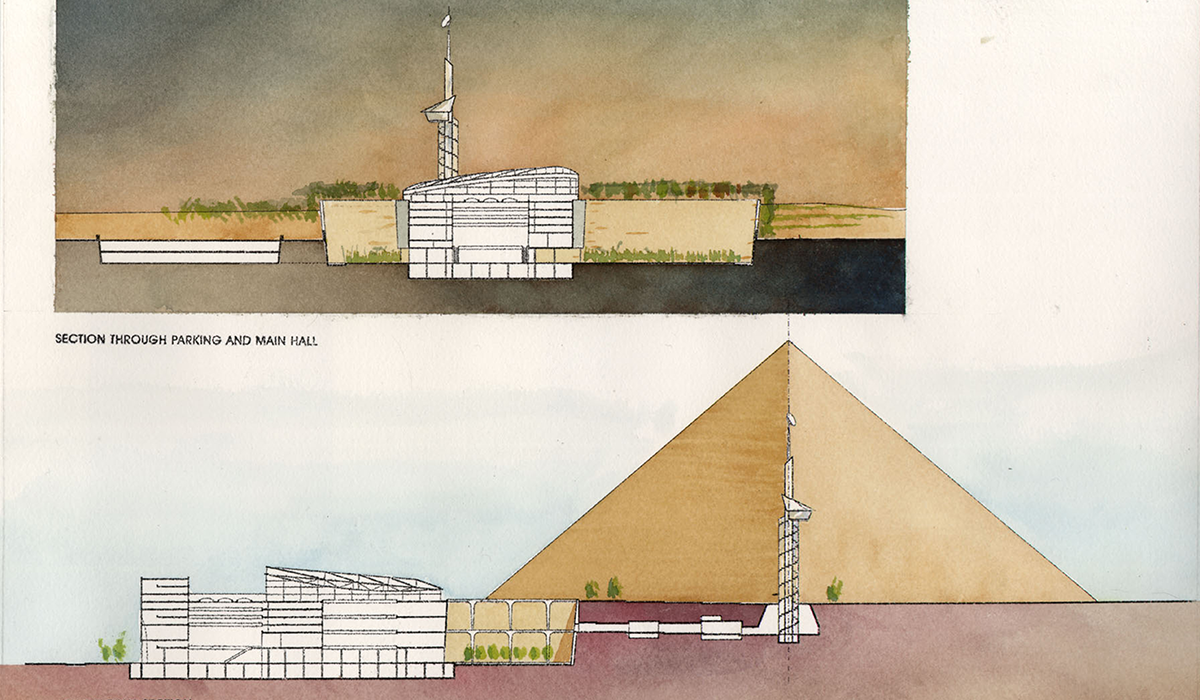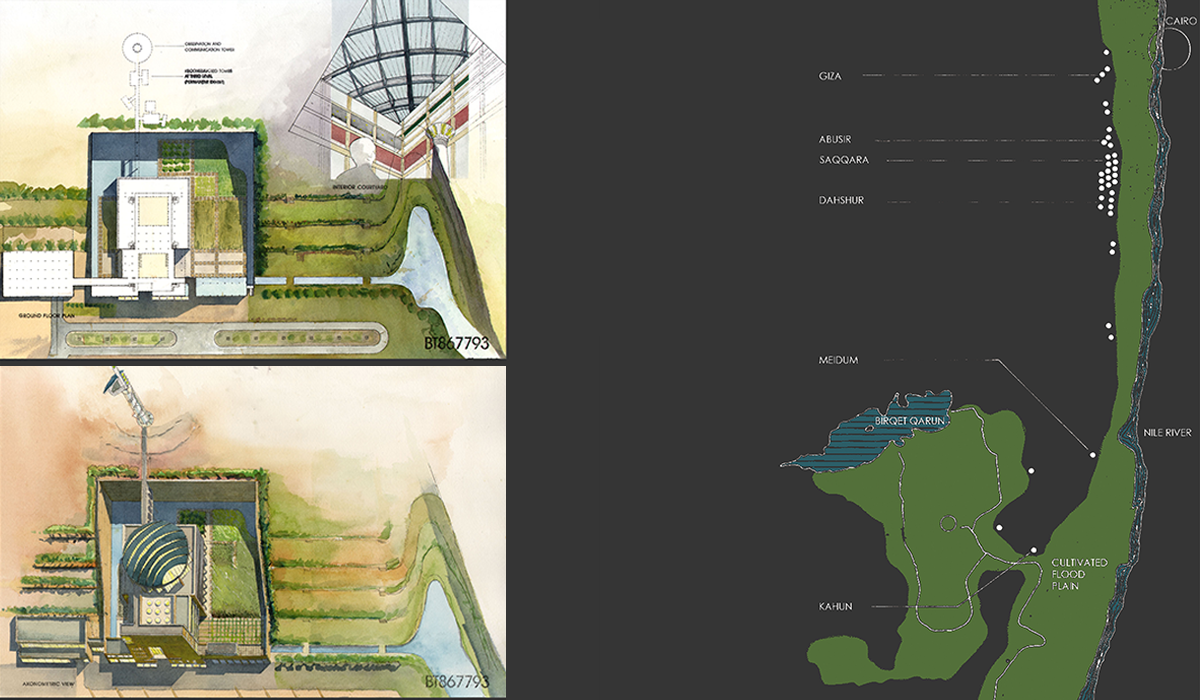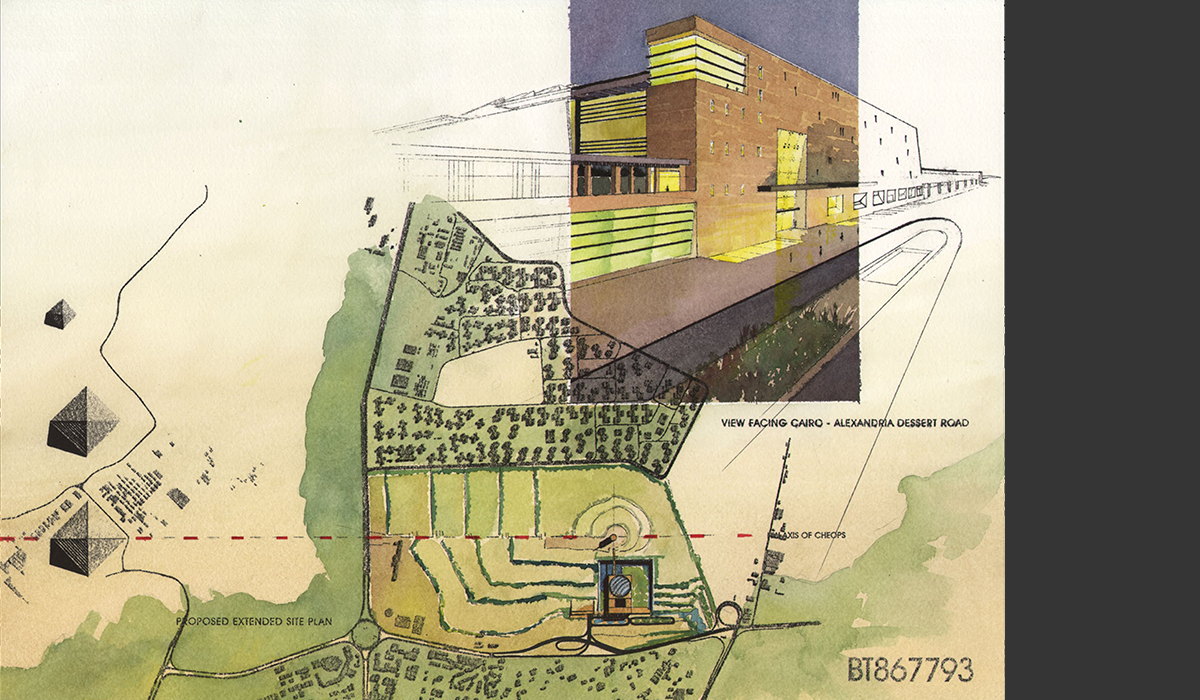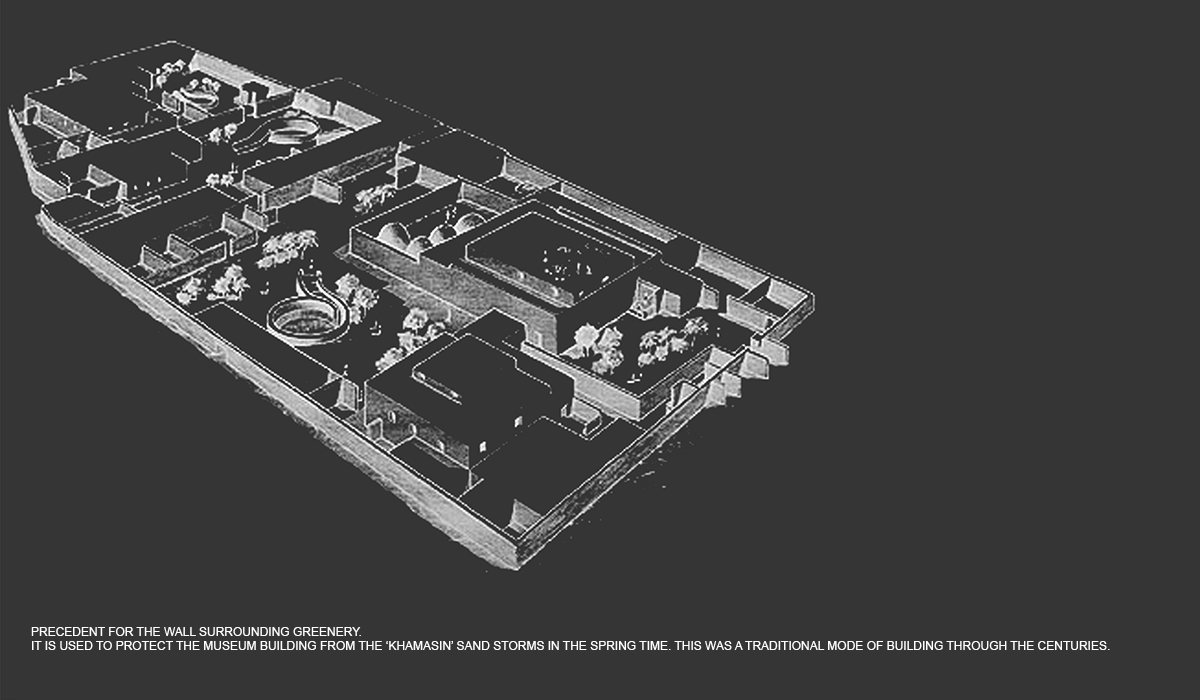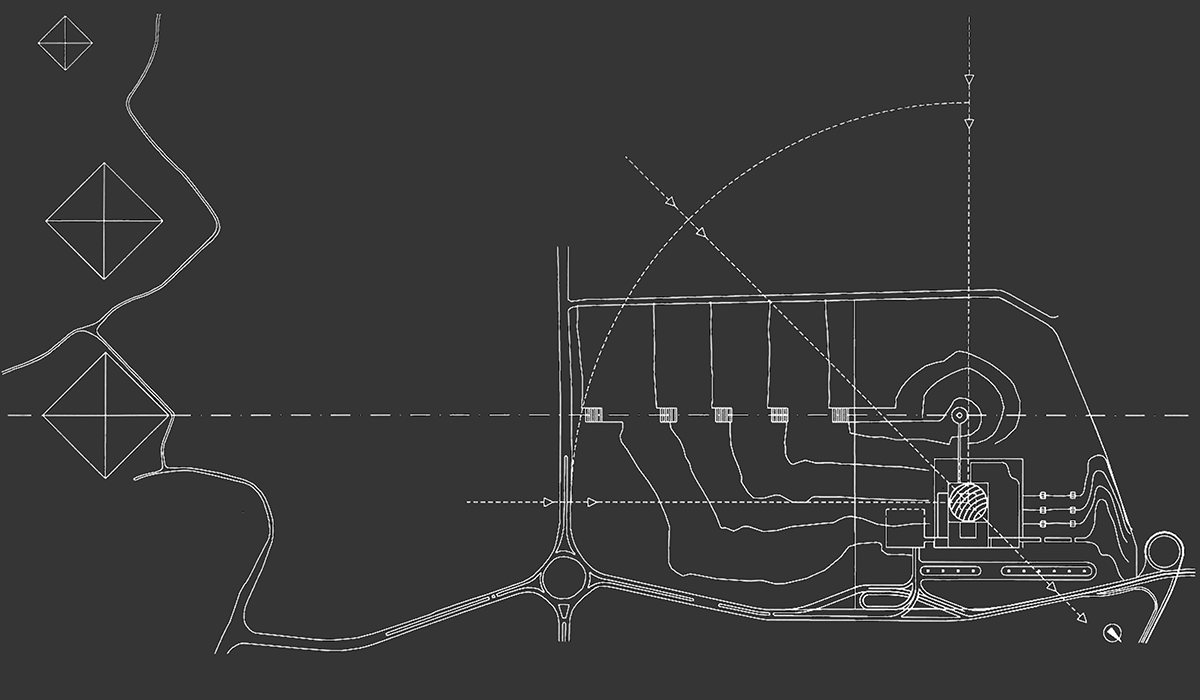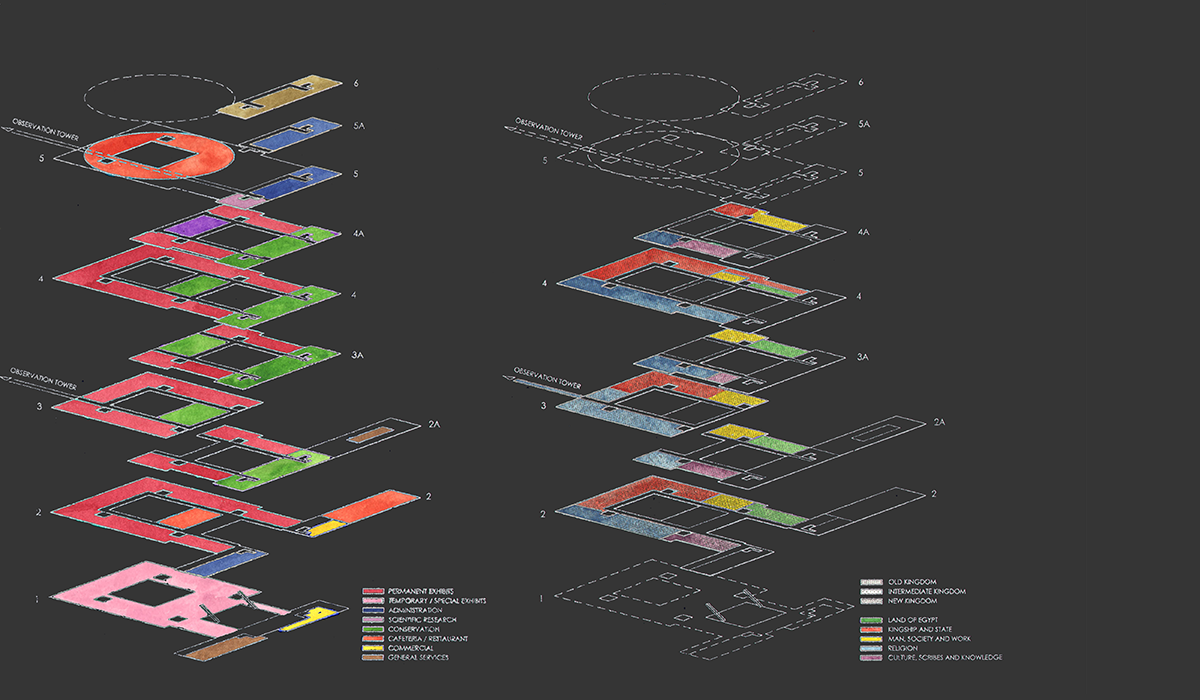The entire building is sustained by the solar energy absorbed by the photovoltaic cells on the roof. 'The leaf' collector symbolically represents the sun, filtering the light to protect the artifacts from the ultraviolet rays, while converting the solar power to electricity in order to cool, heat and light the building. To maintain maximum efficiency 'the leaf' is washed periodically from collected water in the evening to remove the sand and dust. The water finds its way to the moat, that symbolizes the River Nile, giving life to all beings in Egypt. Indigenous plants and livelihood crops growing in the garden are integrated with the 'Land of Egypt' exhibits inside the museum.
Telescope and satellite communication gear will be placed at the top of the tower for the visitors to view the pyramids of Giza in the context of many more pyramids along the west bank of the river Nile. The satellite connection will allow the viewing of the many artifacts of the Egyptian antiquity, which are currently dispersed throughout the museums of the world.

